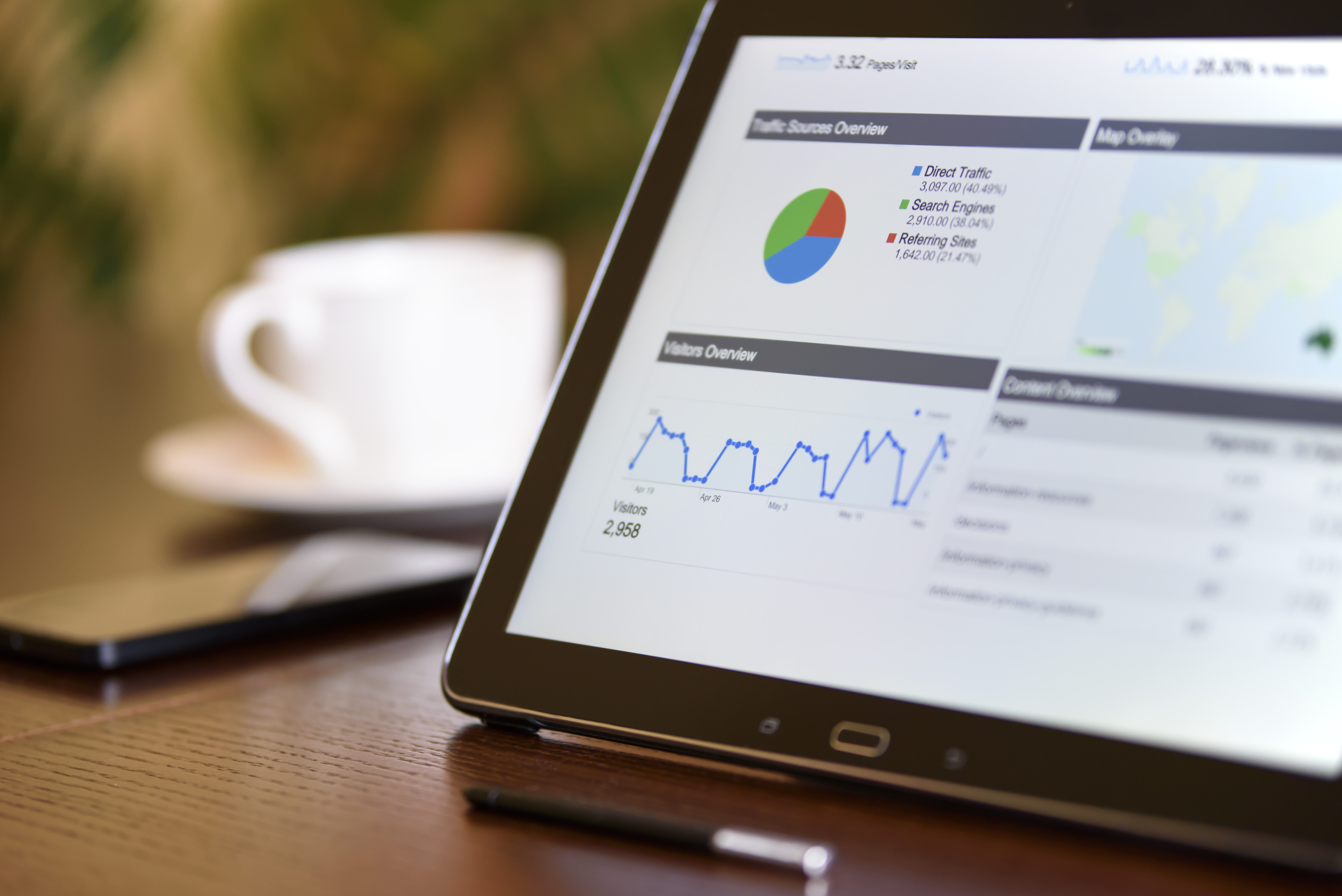By Joshua Snape, | 2/19/2018 7:33 PM
American engineer and statistician W. Edwards Deming said, “In God we trust, everyone else bring data.” No doubt you are aware of the importance of data in marketing; and that, theoretically, data is knowledge and knowledge is power. Yet, your organization may possibly be one of the many that isn’t gathering and analyzing data in ways that maximizes its potential benefits to your business.
How to Apply Online and Offline Marketing Analytics to Bring You More Business
Online Analytics
 Google Analytics is the most popular web analytics service, and will be what dictates the success of your search engine optimization strategy, in addition to all other online marketing initiatives. How does it work? It works by providing quick and easy answers to questions like:
Google Analytics is the most popular web analytics service, and will be what dictates the success of your search engine optimization strategy, in addition to all other online marketing initiatives. How does it work? It works by providing quick and easy answers to questions like:
- How many people visit your site?
- How many of these are new visitors?
- What is the geographical location of these visitors?
- What percentage of your site visitors make online purchases from your site?
Social Media Analytics Tools
There are two main ways you can approach social media monitoring:
- Using social media dashboards on the [which platforms? Those of each social media provider?] platforms themselves
- Using third-party social media analytics tools to track campaigns
Offline Analytics / Measurement

Applying the principle of analytics to offline marketing can be a challenge since the data is harder to gather. But fear not, there are ways to overcome this data-hurdle.
For example, if your company decides to exhibit at a trade show or a conference gather as much data as you can from visitors; at the very least their contact information. We need to explain more clearly/details on ways to capture this data. See below. . . . Measuring your offline marketing results is critical to determine what your ROI is for each marketing activity.
you can set up a microsite with a unique URL that is given only to connections you make during the event allowing for subsequent measurement of the ongoing value of business generated from that specific initiative. Big and bold custom URL’s can serve as a great call-to-action resulting in measurable engagement.
The same tactic can be applied to physical advertisements, billboards, leaflet campaigns, etc. Either a unique URL or a specific promo code can be placed in the ad. This granular method is an excellent way of tracking the effectiveness of any given campaign. In this regard, Google Analytics enables you to track the performance of your unique URLs. Simply putting your regular website on a billboard or leaflet will not allow you to track the success of each individual campaign.
Analyzing Your Data to Bring More Business
Even if your company is geared up to collect data, how do you go about using it to improve your marketing and bring more business?
One case study of how this can be done is that of a leading e-commerce floral company. Foryouflowers.com enjoyed 30% business growth each year over the first five years after introducing a dedicated analytics team.
Note these 5 areas of the business in which analytics boosted growth:
- Delivery
The company works through a complex network of florists including its own distribution centres. Analytics of past delivery performance allows accurate appraisal of delivery times in each major city.
- Supplier Selection
By analyzing customer feedback in connection with delivery times and product quality, decisions were made to drop certain under-performing suppliers.
- Focus on Loyal Customers
Data provided insights into which were the best customers to focus on that were most likely to become loyal, repeat customers.
- Minimizing Costs
Seasonal demands of the industry require a flexible labor force. Careful analysis of specific requirements has ensured more efficient management of staffing costs.
- Advertising and Product Selection
Split testing of every ad and promotion has led to maximum effectiveness. Choosing which products to offer and their placement on the website is tracked and measured to drive sales most effectively.
5 More Ways to Apply Marketing Analytics to Your Business
Here are 5 further ways to apply online and offline marketing analytics to bring you more business:
- Online and Offline Personalization
Proper use of customer and consumer data, allows you to make personalized offers that are relevant to each individual or each target segment. This data can be used to create a customized shopping experience on your website.
Customer data can identify differences in preference by region. This enables stores in each region to feature the right products in store windows and in key locations within the store.
Real-time analysis of web and in-store purchases can show you what promotions are effective and the differences in purchasing habits and profitability for these items between online and in-store. That real-time insight based on customer data can ensure the right promotions go to the right channels.
- Product Improvement
Analytics can enable you to identify high demand products and the price that consumers will happily pay. You can also use customer data to identify the right consumers to ask for feedback on your products and services and tweak them accordingly.
- Reducing the Cost of Customer Acquisition
By comparing data such as purchasing history, profile information, the behavior of customers on social media sites etc. you can find patterns of behavior for your best customers and the campaigns that influenced them the most.
Use information about how each customer is engaging with your brand and adjust your marketing strategy accordingly. Target people of certain profiles with specific advertisements (both online and offline) that are proven and effective and make your marketing dollars go further.
- Customer Service
Use historical customer data such as purchase history, to provide personalized customer support. Imagine the positive impact on a customer who calls and is greeted by an agent who addresses that consumer by name, they thank them for their support since the date of their first purchase, and then identifies their most recent purchase anticipating and enquiring as to whether or not this is the reason for their call.
- User Generated Content
You can use data from surveys and other customer feedback and share it on social media to generate authentic buzz about your business.
In summary, use web analytics and social media monitoring tools to gather important data.
Bridge the gap between your offline and online marketing so that you can benefit from the power of tracking and measurement to maximize your ROI in both your online and offline marketing initiatives.
Bring the power of marketing analytics to every area of your business and to improve your campaigns and maximize your company’s growth.
For assistance in applying, analyzing, and reporting on analytics for both your online marketing and offline marketing strategies, we encourage you to contact Strategis today!

 Joshua is an accomplished writer, blogger and marketing consultant. His successful track record includes sales and marketing across four continents—Europe, N. America, the Middle East and Africa. Josh is also a successful entrepreneur and established his own marketing consultancy in Cyprus, which serviced clients throughout the Middle East. He now enjoys living and working in Vancouver for part of the year, and spends the rest of his time in the Turkish Riviera working remotely to assist clients communicate effectively in a wired world. Connect with Josh at: joshua@strategisconsulting.ca.
Joshua is an accomplished writer, blogger and marketing consultant. His successful track record includes sales and marketing across four continents—Europe, N. America, the Middle East and Africa. Josh is also a successful entrepreneur and established his own marketing consultancy in Cyprus, which serviced clients throughout the Middle East. He now enjoys living and working in Vancouver for part of the year, and spends the rest of his time in the Turkish Riviera working remotely to assist clients communicate effectively in a wired world. Connect with Josh at: joshua@strategisconsulting.ca.

